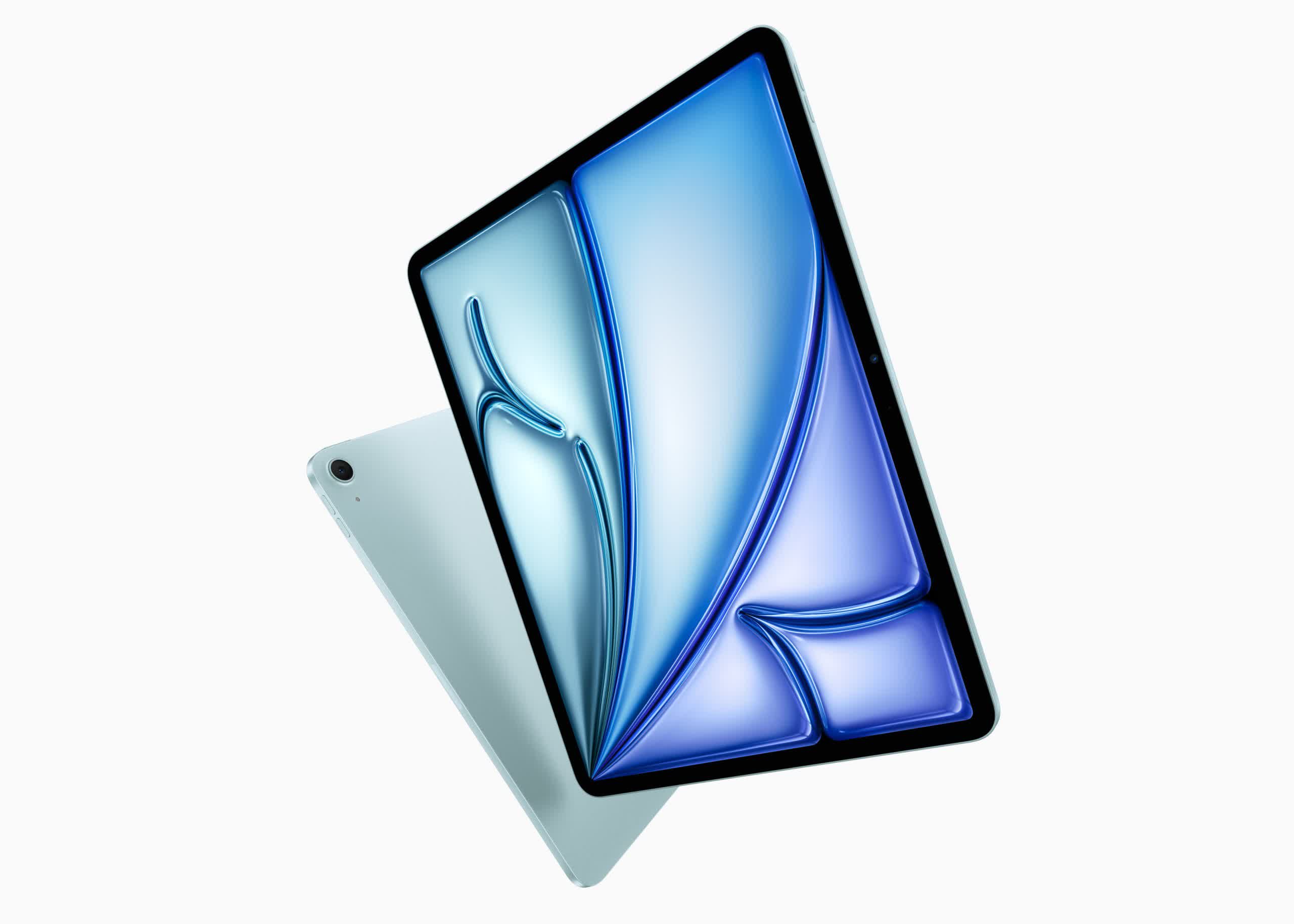Something to look forward to: The new OLED iPad Pro and M4 processor were the main attractions of Apple's May 7 iPad event, but the iPad Air also received a significant update. The company's mid-range tablet now offers a new screen size option, increased performance, faster wireless connectivity, a new front-facing camera, and support for the newest Apple Pencil.
With the new iPads, Apple continues its new practice of offering large-screen models of its mainstream devices. For the first time, customers can purchase a 13-inch iPad without paying a premium for the iPad Pro.
The M2 processor makes the new iPad Air 50 percent faster than the previous model, maintaining eight CPU cores and increasing the GPU core count from eight to 10. Those upgrading from the iPad Air with the A14 Bionic chip should receive a 3x performance uplift. Moreover, Apple upgraded Wi-Fi connectivity from Wi-Fi 6 to Wi-Fi 6E.

Like the 10th generation iPad, the new iPad Pro and iPad Air models shift the front-facing camera to the long side of the bezel, allowing users to conduct FaceTime calls in landscape view. Another new feature the updated iPad Air shares with the new Pro model is support for the newly introduced Apple Pencil Pro. It adds haptic feedback and new rolling and squeezing inputs.
Pre-orders for the new iPad Air models are now open. The 11-inch and 13-inch variants start at $599 and $799, respectively. The base storage offering has doubled from 64 to 128GB, and Apple has introduced 512GB and 1TB options.
Apple likely launched the new products to try to boost tablet sales, which have suffered from the same downturn that affected other tech over the last two years like PCs and smartphones. While other product categories began showing signs of recovery in the fourth quarter of last year, tablet shipments have only just started creeping back upward.
The IDC reports that the sector grew by half a percent in Q1 2024, the first recorded growth since the second quarter of 2021. Although Apple remains the biggest tablet vendor, it sold 8.5 percent fewer units compared to the same quarter last year. Most of the growth was driven by Chinese manufacturers Huawei and Xiaomi, which saw a 43.6 percent and 92.6 percent sales increase, respectively.
